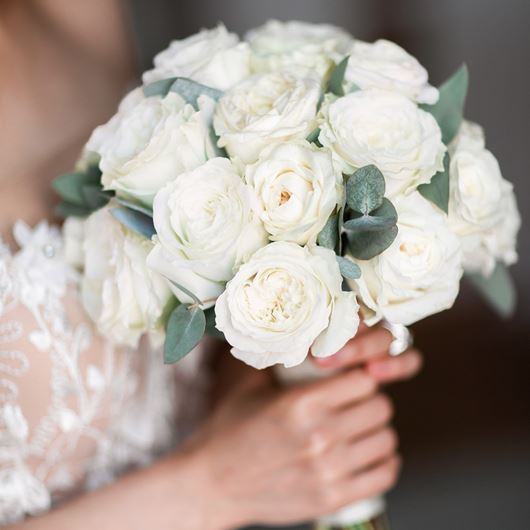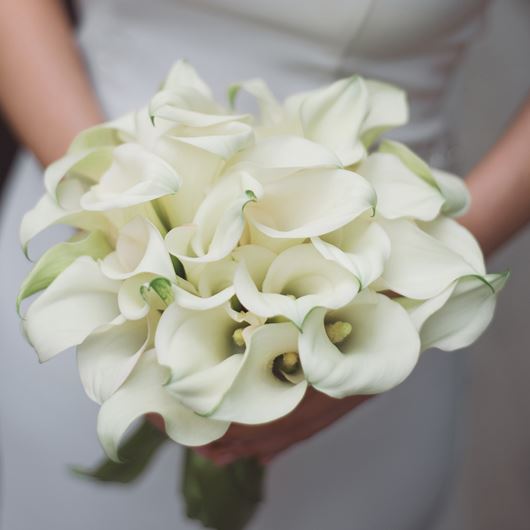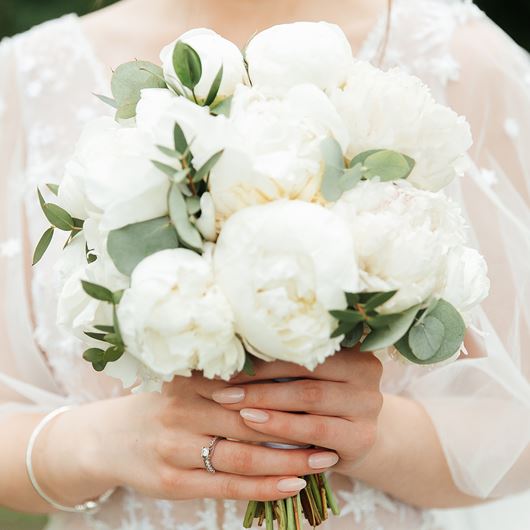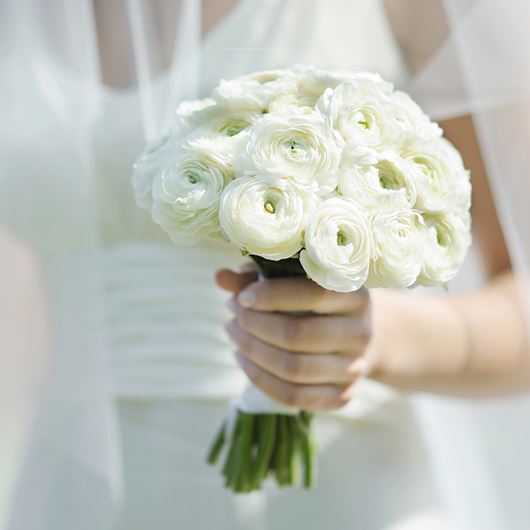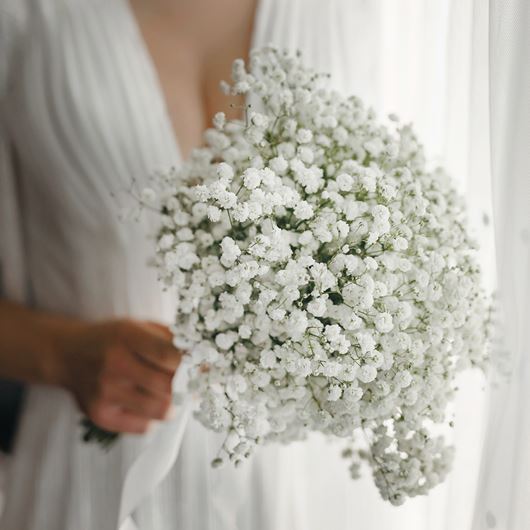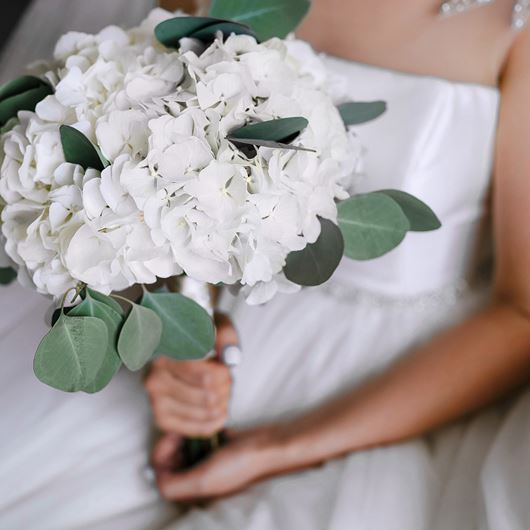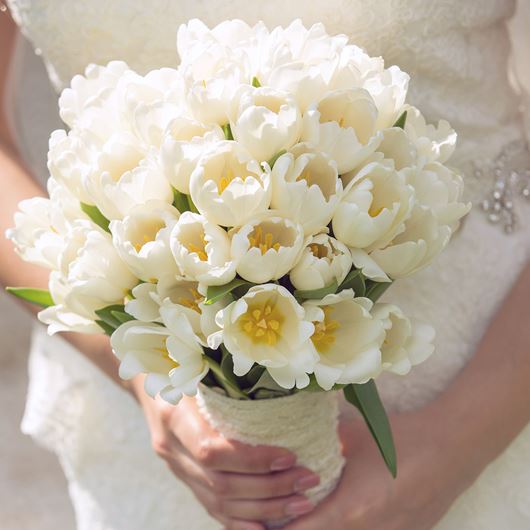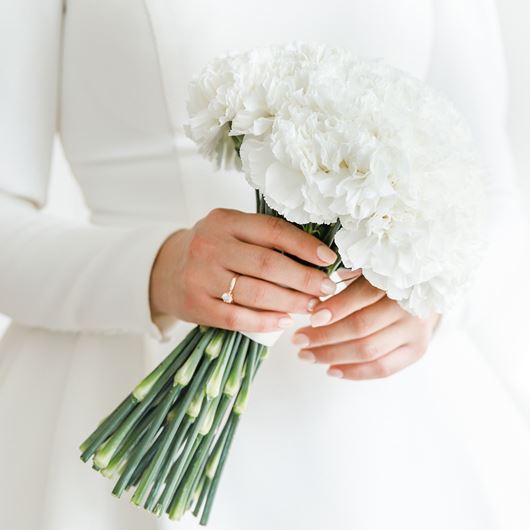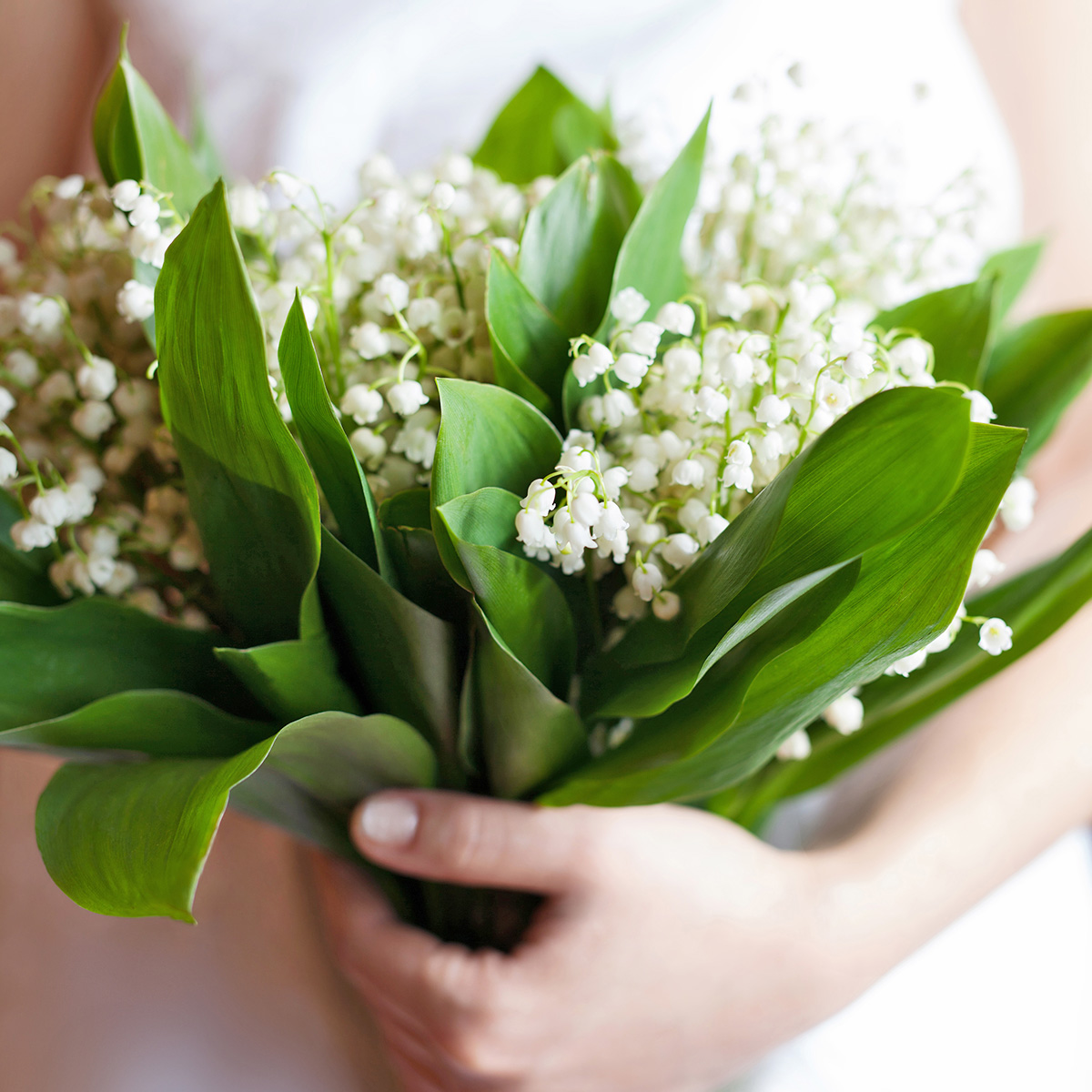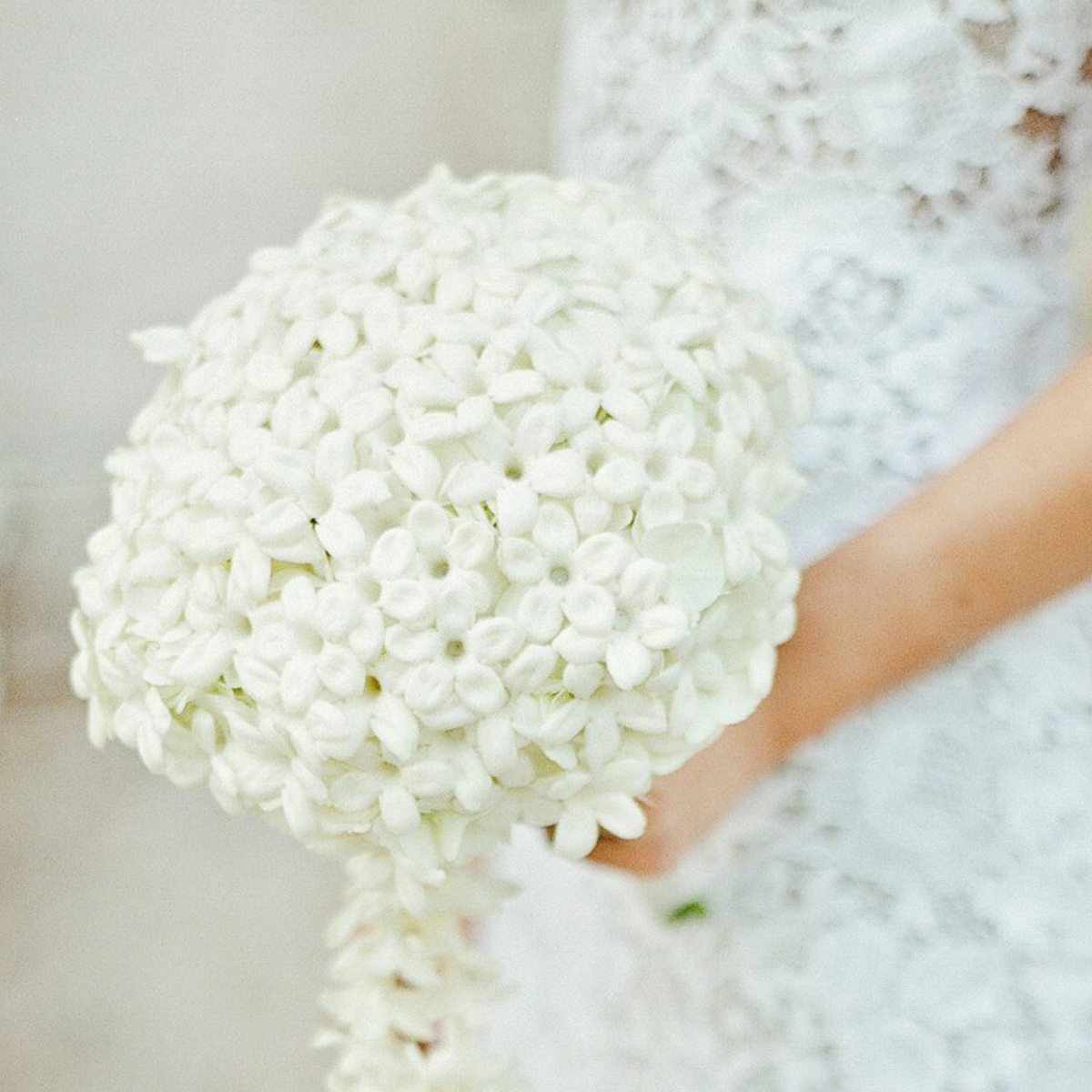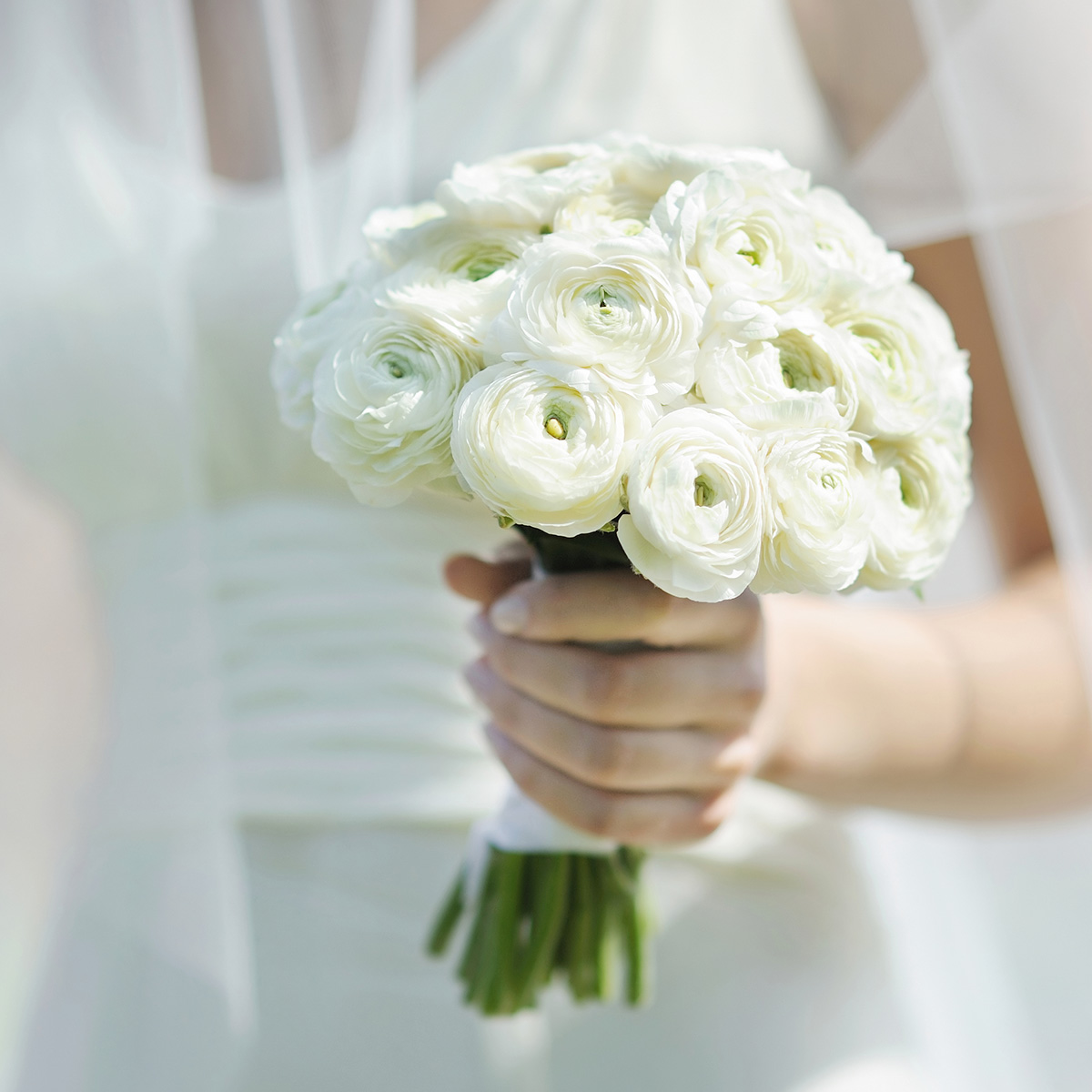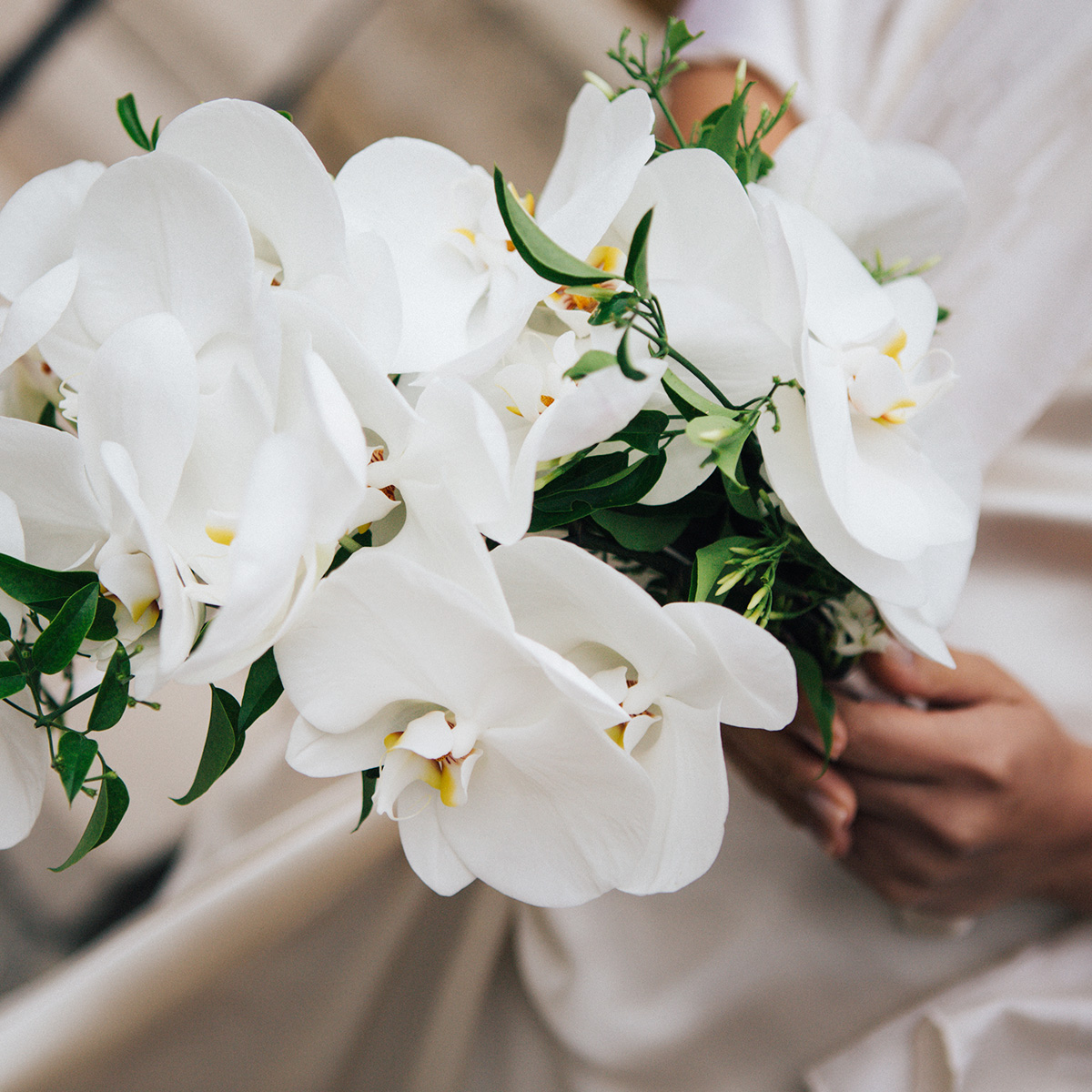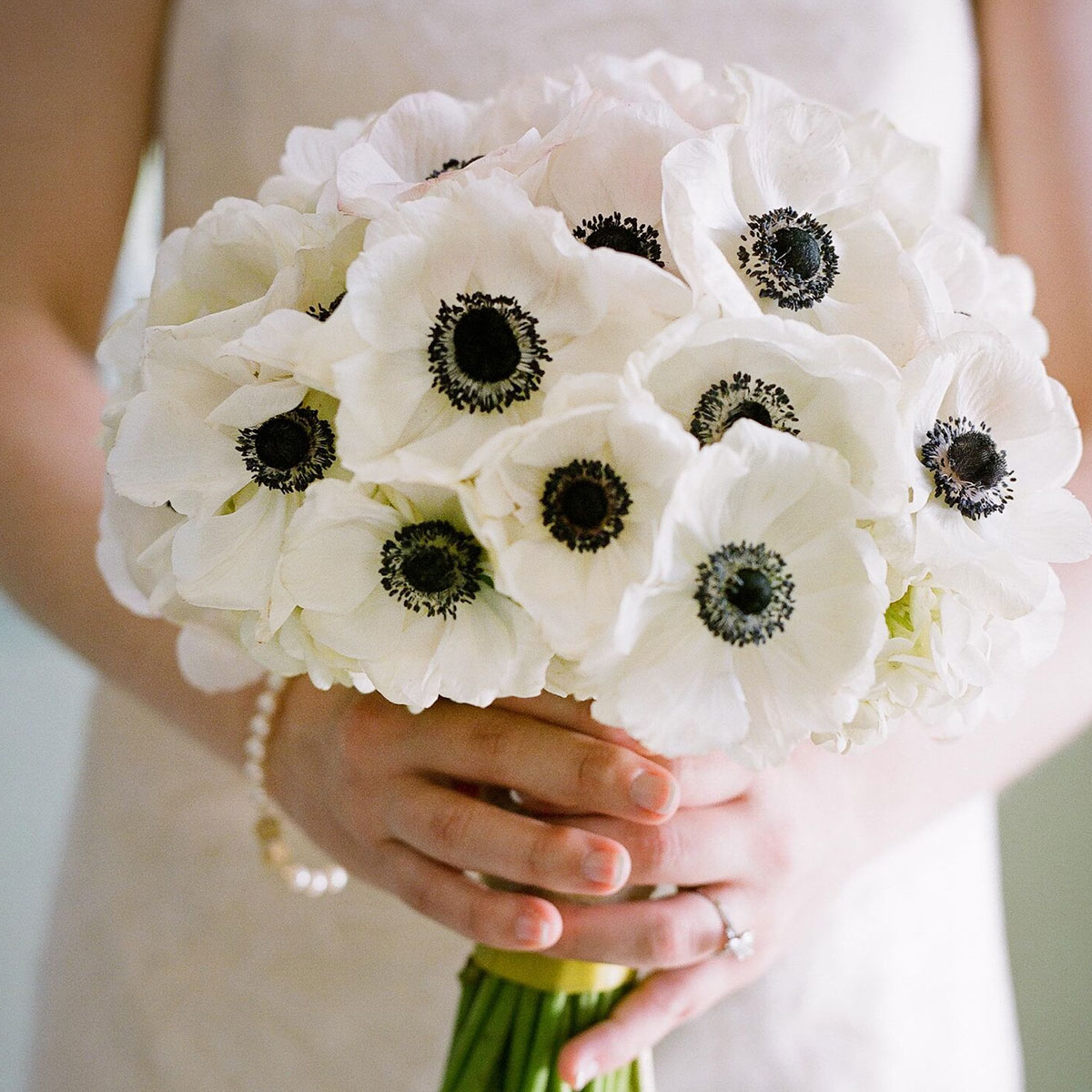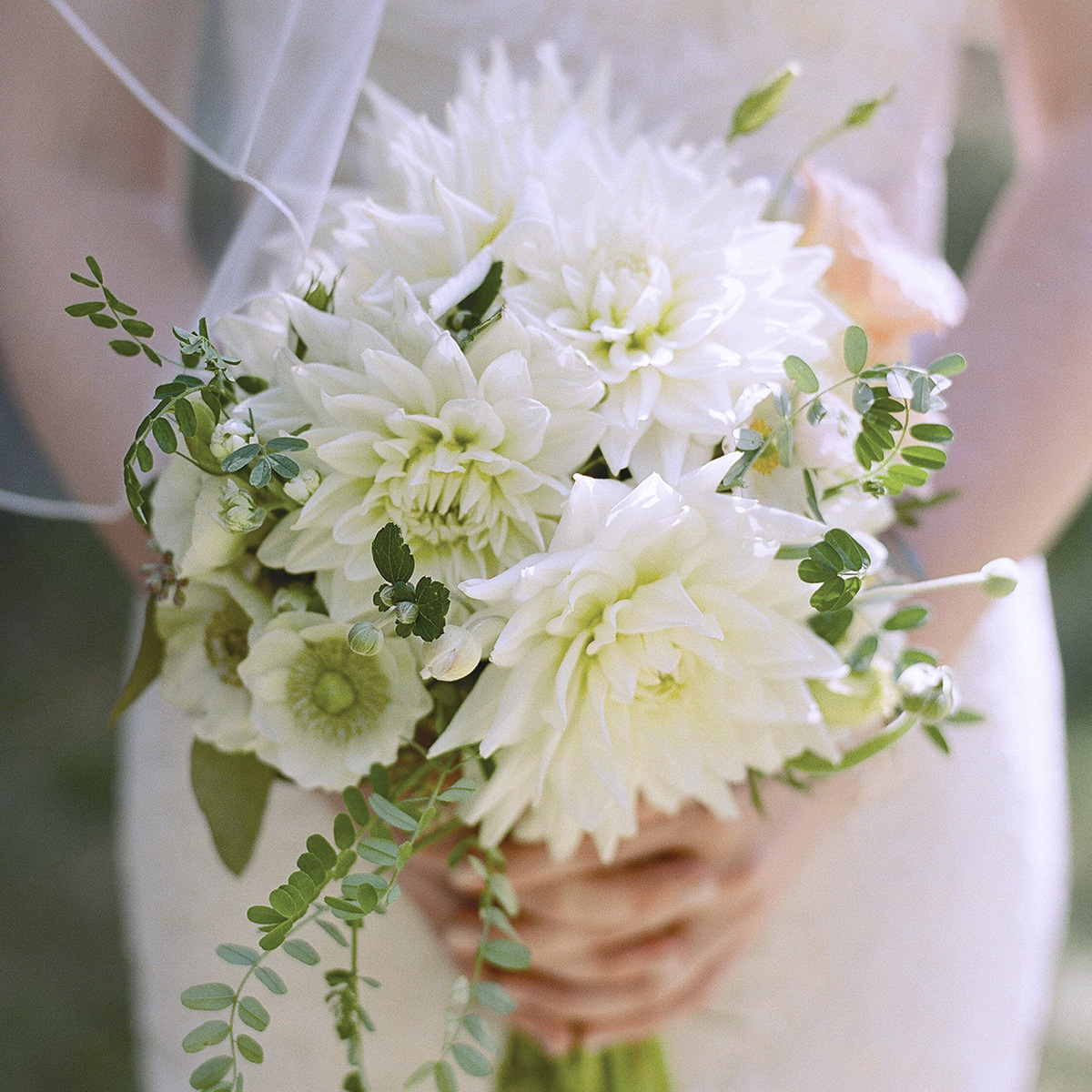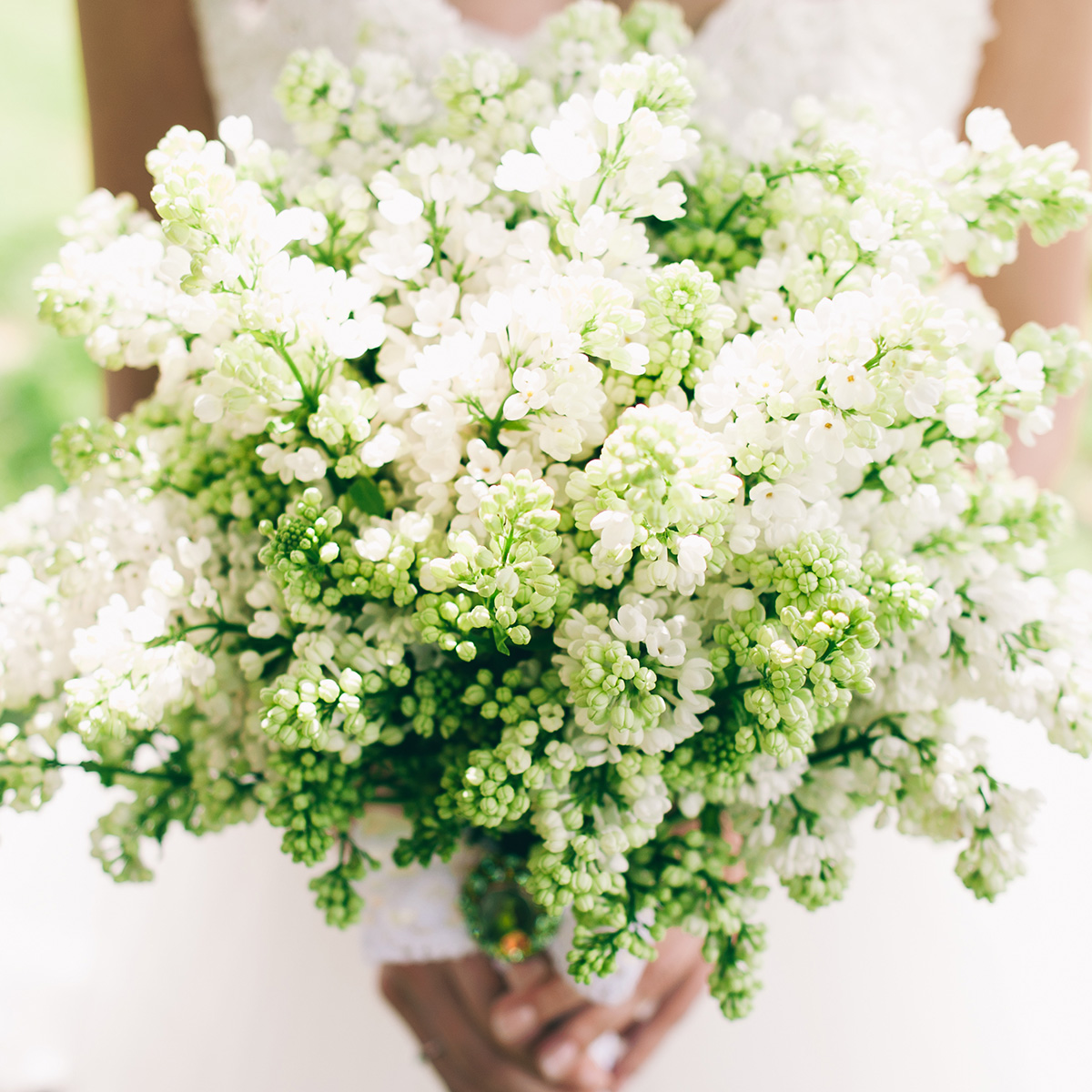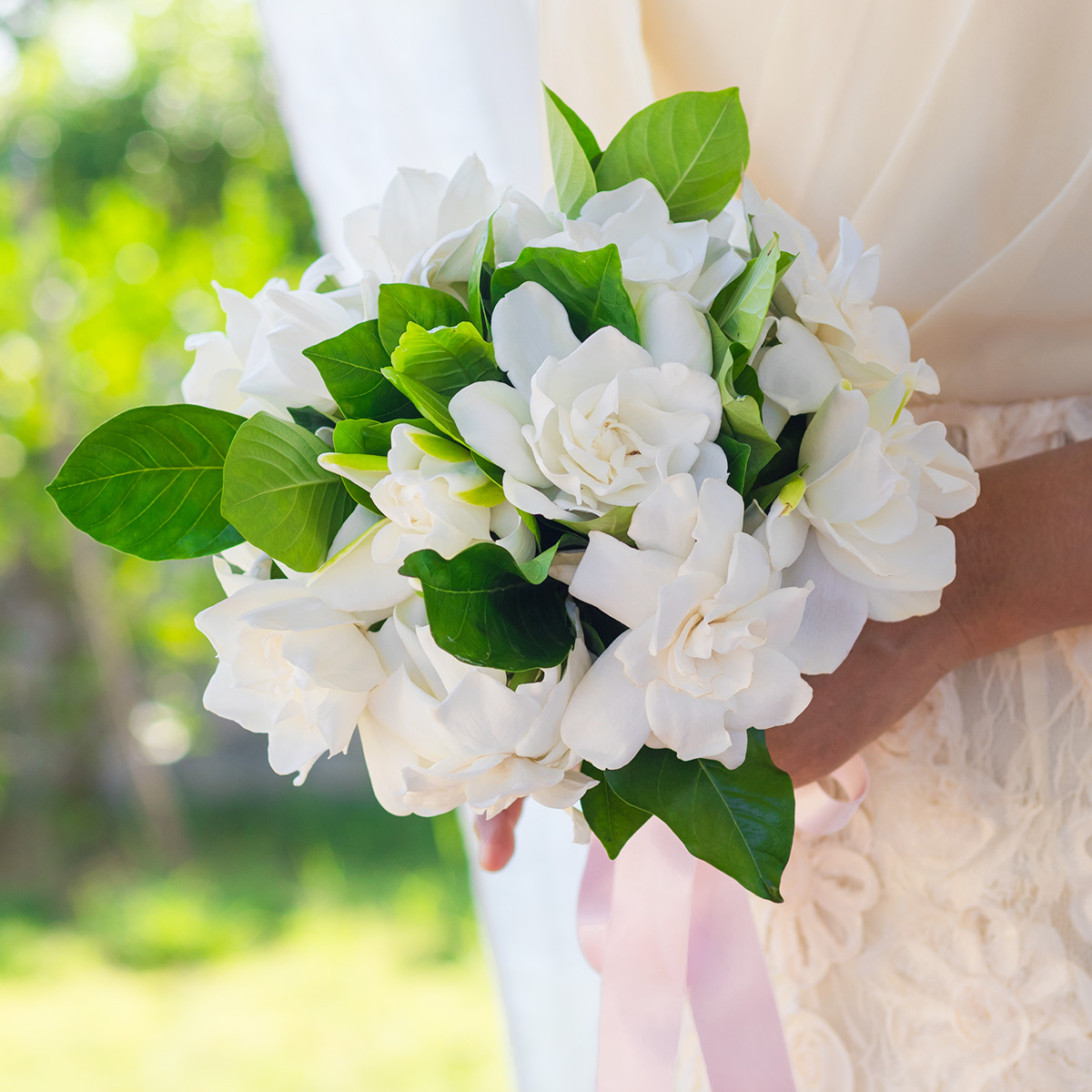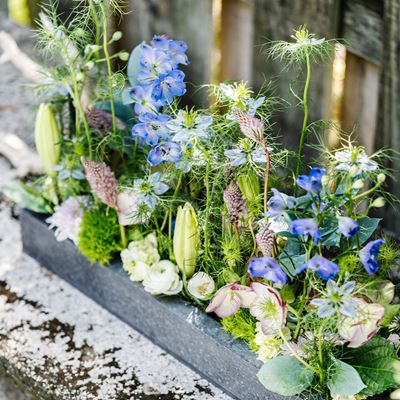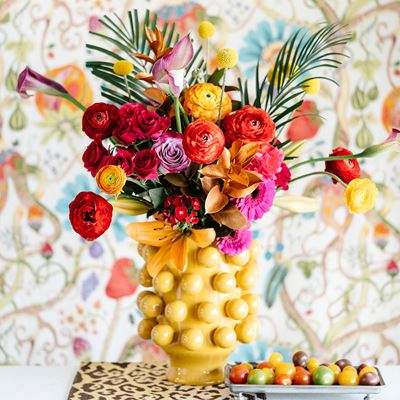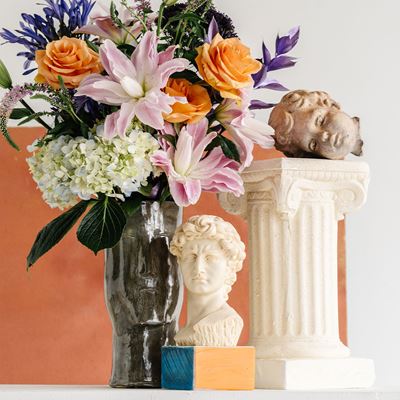Completing our 2023 lookbook series, our sixth and final trend, ATMOSPHERIC, pays homage to our planet's habitats at large. This trending macro view gathers an immersive palette of cool hues, borrowed from the oceans and forests, and pairs it with glowing bright white.
A Nice Day for a White Wedding: The Essential Flower Guide
When planning a wedding, everything comes down to preferences and personalization. Yet time and time again, classic monochromatic palettes—featuring stark white, ivory or cream shades—continue to dominate the trend lists for traditional and contemporary decor schemes. Floral selections are also no exception here; many couples opt for white-toned flowers not only to enhance the rest of their nuptial theming, but also for their symbolism. In the "language of flowers" (aka floriography), white varieties typically express emotions related to purity, faithfulness, new beginnings and love.
Read on for our list of the top blooms to complete the white wedding of dreams.
ROSE. The quintessence of love and beauty, the rose is the world's best-selling flower and a beloved wedding icon. Today there are over 3,000 commercial varieties of roses available in hybrid tea, sweetheart, spray and potted forms. All come in various colors, shapes, sizes, and fragrances, meaning the design possibilities with this bridal classic are endless.
Language of Flowers: Use white roses to symbolize innocent love.
TULIP. A herald of spring, the tulip is known for its unique, goblet-shaped blossom, waxy foliage and generous color range. The fascination behind this brilliant bloom has shaped the fortunes of entire nations, and that zeal continues today: tulips rank among the most popular (and versatile) flowers used in wedding work and beyond. Available in Dutch, French, and parrot types, they complement assorted floral selections and palettes with ease.
Language of Flowers: Use white tulips to symbolize purity.
CALLA. The calla is elegance defined. Its novelty is attributed to a singular "petal" (which is actually a spathe) that curls to form its distinctive, trumpet-shaped bloom. Found in both classic giant and mini forms, callas make worthy focals or accents in wedding bouquets and arrangements. Even with just a few stems, their festive silhouettes and crisp colors offer visual interest, dimension and a touch of drama.
Language of Flowers: Use white callas to symbolize faithfulness, innocence and purity.
HYDRANGEA. This nuptial favorite's ruffled globes combine the nostalgia of Grandma’s garden with the whispered promise of romance to come. Adding lush volume and fullness to wedding bouquets and arrangements, Hydrangea is a powerhouse filler. Single stems are topped with large, flowering heads composed of small florets; these are generally seen in pastel shades or rich jewel tones.
Language of Flowers: Use white Hydrangea to symbolize purity, faith and abundance.
PEONY. Prized for its voluminous bloom and romantic fragrance, the peony has become a wedding staple—and not only for its good looks. Couples also enjoy incorporating the flower into their decor because of what it represents: love, prosperity and a happy marriage.
Language of Flowers: Use white peonies to symbolize beauty and good fortune.
LILY-OF-THE-VALLEY. You may remember this dainty beauty from Kate Middleton's and Prince William's royal wedding in 2011. Arguably one of the most timeless wedding flowers, lily-of-the-valley features highly fragrant, bell-shaped florets that are evenly arranged in a step-like shape—which explains the nickname "ladder to heaven." Its understated yet elegant blooms shine well on their own, or they can combine with other botanicals to supplement a garden-style look.
Language of Flowers: Use white lily-of-the-valley to symbolize purity, happiness and good luck.
STEPHANOTIS. What better flower to use on your big day than one that represents marital bliss! Stephanotis is another tried-and-true wedding classic, cherished for its pure white, star-shaped blossoms and sweet fragrance. Its small flowers—which lend well to more formal settings—are traditionally used in bridal bouquets and boutonnieres.
Language of Flowers: Use white Stephanotis to symbolize good luck, a happy marriage and new adventures.
Styling: Jackson Durham Events | Photo: KT Merry Photography
GYPSOPHILA. One of the world's most iconic wedding flowers, Gypsophila (commonly referred to as baby's breath or gyp) is known for its airy, lace-like texture and rich symbolism. These elements—combined with its prime availability and budget-friendly price point—are what make gyp a treasured filler (or focal) flower for use in wedding bouquets, centerpieces and other installations.
Language of Flowers: Use white Gypsophila to symbolize purity, innocence and everlasting love.
RANUNCULUS. A Pinterest star turned wedding crowd favorite, Ranunculus is loved for its brilliantly colored, crepe paper-like petals, multi-layered blooms, and symbolism rooted in charm and attraction. Whether used as a focal or filler, its whimsical flowers make ideal additions to bridal bouquets, boutonnieres and centerpieces.
Language of Flowers: Use white Ranunculus to symbolize elegance, grace, innocence and pure love.
ORCHID. The rare beauty of this exotic flower knows no bounds! Among the thousands of varieties that exist today, Phalaenopsis and Cymbidium spray orchids remain the most popular types used for weddings. Their luxurious shapes, generous blooms, and free-spirited aura add a wow-factor to ceremony florals—especially for tropical or beach themes.
Language of Flowers: Use white orchids to symbolize innocence and purity.
ANEMONE. With a name meaning windflower in ancient Greek, the Anemone is a bright, poppy-like bloom with a playful secret. What many believe are the flowers' "petals" are actually sepals, or the protective outer "leaves" that grow out of the calyx (flower base). Bold yet delicate, Anemones add contrasting texture and dramatic flair to wedding florals, especially when paired with more traditional flowers like roses and Hydrangea.
Language of Flowers: Use white Anemones to symbolize purity and sincere love.
Styling: Petal Pushers | Photo: Q Weddings
DAHLIA. This garden-style favorite adds a sophisticated yet youthful touch to wedding decor. A cousin to modern-day daisies, Dahlias are known for their billowy, multi-layered blooms that come in various colors, shapes and sizes. They're also incredibly versatile; one large Dahlia can serve as the starring attraction of a minimalist bridal bouquet, or several smaller varieties can add hints of color and texture to reception centerpieces.
Language of Flowers: Use white Dahlias to symbolize eternal love and commitment.
Photo: The Knot
CARNATION. The carnation is a florist favorite that remains among the five best-selling flowers in the world. This pretty perennial comes in an enormous array of cultivars (standard or spray types) and has earned a place in the wedding world as preferred filler—likely due to its durability. Did you know that carnations can last an entire wedding day without water? Their ruffled blooms also add sass and impressive texture to bouquets and centerpieces, all without breaking the bank.
Language of Flowers: Use white carnations to symbolize distinction and devoted love.
LILAC. The flower that inspired such artists as Vincent van Gogh and Claude Monet is also a wedding legend. Reminiscent of everything we love about spring, lilacs delight the senses with their delicate, tubular-shaped flowers (mostly seen in purple or white shades) and signature fragrance. Lilacs are especially perfect for couples marrying their first true love; in floriography, lilacs signify the first emotions of love.
Language of Flowers: Use white lilac to symbolize purity, divinity and innocence.
GARDENIA. Wildly popular in Southern traditions, the Gardenia is a waxy, intensely aromatic flower with porcelain-esque tones and a star-like shape. This simple yet dramatic bloom is typically seen adorning bridal hairdos or floating in a bowl, but is also known throughout the wedding world for its fragility. Gardenia petals are quite delicate and can bruise easily.
Language of Flowers: Use white Gardenias to symbolize purity, grace, sweetness and joy.
